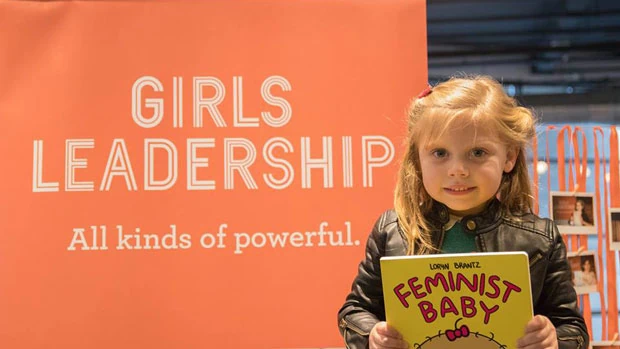
By Priscilla Rodriguez and Alexandra Fradelizio | m/Oppenheim Media Writer
Across the globe and within the U.S., girls and women are constantly pressured to meet an impossible standard of perfection, while simultaneously being taught that they are not enough.

“I was raised in a culture where as a girl, I was taught to suppress my own needs and feelings in order to ‘keep the waters calm’ and be a low-need child,” says Simone Marean, Co-Founder & Chief Executive Officer of the Oakland-based nonprofit, Girls Leadership, which empowers girls to embolden and cultivate the power of their voices.
In today’s world, Marean explains, girls are told to look a very specific way. They are asked to work hard in order to get into the “best university” and are made to believe that there is nothing innate about their value. They are constantly bombarded by impossible standards through social media every day. All this, she explains, results in the cultivation of the widespread, internal dialogue among girls of ‘What will people think?’ and the constant fear of being judged. When you look at the population of more than 25 million girls in the U.S., the percentage of those who are battling anxiety and depression is increasing every year. Between 2010 and 2015, the number of girls battling with depression increased by 50 percent – one small, yet impactful result of the pressures that lead girls, then women, to lose their confidence somewhere along the way.
To tackle the crisis of lost confidence among young girls, teens, and women, Marean and Co-Founder Rachel Simmons established Girls Leadership in 2009 with the goal of empowering voices and cultivating confidence among those who identify as females across the U.S.
As teachers, Marean and Simmons had been exposed to many communities of girls over the years, from the most privileged, to the most impoverished; from Latino, to black and white; from Muslim, to Jewish, and Sikh. In all cases, the two co-founders observed that the common thread among girls and women was a fear of being judged and the resulting paralysis of that fear.

“I could see in the communities that I was teaching that across the board, the terms of femininity and gender expectations were limiting girls’ ability to speak up and to self-advocate and approach conflict as an opportunity for change,” says Marean.
“There was something happening as girls became young women, and they were giving up their power,” she adds. “[We] saw the opportunity to develop their voices and give them back.”
This was the start of Girls Leadership, which today touches more than 10,000 lives every year through its various educational programs for girls and adults. Though the organization originally started with programming that focused on teaching girls to explore their voices, Marean explains that the group quickly recognized the importance of involving parents, teachers, and any caregivers into the process of emboldening girls.
As Girls Leadership celebrates its 10th anniversary, Marean recalls the impact that the organization has had over the years through more than 100 educators across the country, with four main programs aimed at teaching girls, their parents, teachers, counselors, and caregivers about how to empower girls and help them navigate a world of unrealistic expectations. In recent years, the organization has invested more in reaching girls directly through their teachers.
“There are many reasons for bringing education around social-emotional skills but also gender expectations to teachers,” says Marean.
“When we work with teachers and transform [those] teachers, they can impact hundreds of girls at a time.”
One of the organization’s primary goals now is to train and equip teachers on matters that involve recognizing and understanding the expectations that have traditionally been placed on girls and women for ages and how they can break away from (knowingly or unknowingly) perpetuating those expectations in the classroom.

As they look to the future, Girls Leadership has major goals and a vision to touch more than 1 million lives within the next five years. Simone explains that currently, all organizations that are geared toward empowering and supporting girls cumulatively reach less than 12 percent of the total population of girls in the U.S.
“That’s not going to drive social change,” says Marean.
In order to reach its goal, Girls Leadership established the Power Lab initiative in 2018, “a national incubator that seeks to disrupt the loss of voice and confidence for over one million girls.” The lab partners with others organizations and is working to rebuild the program curriculum to ensure that it will effectively impact and cater to all communities of girls, of all demographics and backgrounds.
“We want to get out there and make sure those million girls represent the diversity of girls in the U.S. in terms of race, ethnicity, and income level,” says Marean.
“Our focus is to become culturally responsive and take a trauma-informed approach [to building curriculum] and really combating the ‘crisis of confidence’ at scale.”
Learn more about Girls Leadership and Donate.
